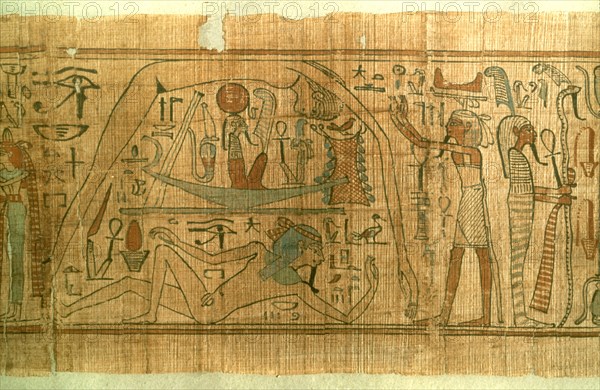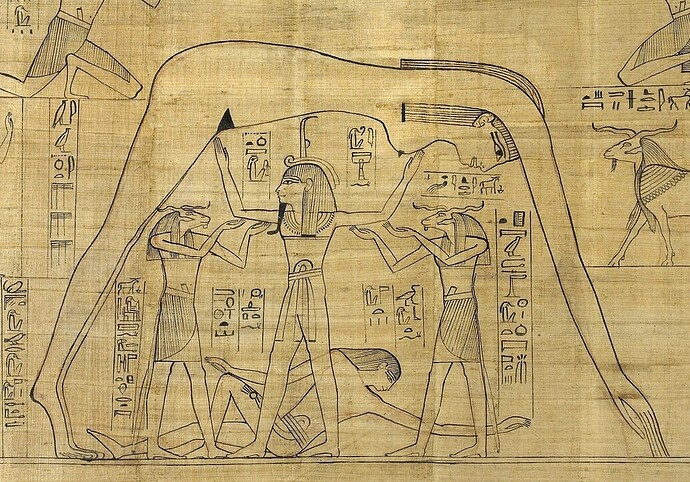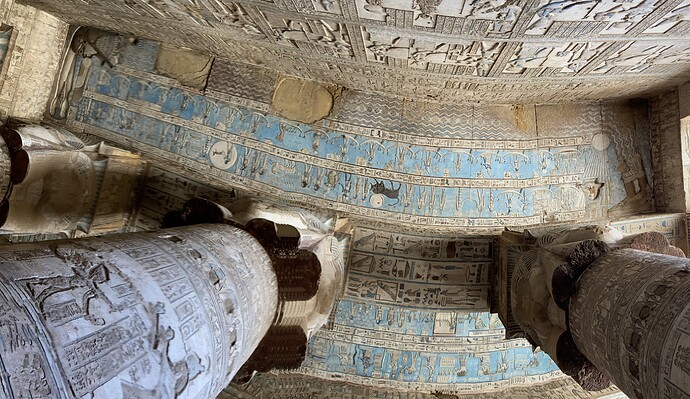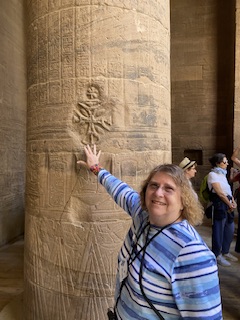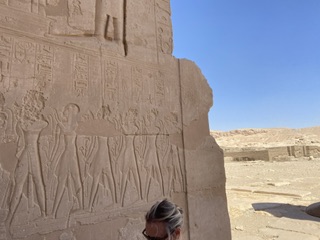I think weve reached an impasse in this discussion… let me give some final thoughts and explain why I remain entirely unmoved and unconvinced, and then I’ll (tentatively) give you the last word…
Again, the two (Egyptian) ones that you showed me are reflecting their spiritual, or otherwise figurative and non-material cosmology. You’ve acknowledged as much and Dr. Walton confirmed this in the video you submitted as well…
“That’s not a picture of the material cosmos… it’s really not intended to be a material picture, they didnt believe that if they walked too far they would step on her toes or something…” (emphasis mine).
But then you (and Dr. Walton apparently) turn right around, after acknowledging that the Egyptian descriptions do not reflect what they believed about the physical/material cosmos, and insist that Hebrew descriptions do reflect what the Hebrews believed about the material cosmos. After giving the Egyptian description of the cosmos plenty of latitude to be metaphorical, symbolic, spiritualized, poetic, or otherwise non-material… you (and Dr. Walton) then insist that Hebrew descriptions of the world must be understood absolutely literally as to how they viewed the physical/material cosmos… and insist that it be understood in the most woodenly literal manner.
You (and Dr. Walton) seem to happily grant that the Egyptian descriptions do not reflect their understanding of the material cosmos (you couldn’t travel too far and step on her toes)… but then turn right around and insist that the Hebrew descriptions do reflect what they thought of the material cosmos… e.g., that there were literal, physical, material foundations holding up the sky, just like in those erudite diagrams… One couldn’t travel too far and step on the toes of the Egyptian godess, but apparently one could travel far enough to physically bump into the literal, material pillars of heaven?
The inconsistency is glaring to me… it is for this kind of uncritical and formulaic thinking in general that I’ve never been impressed with Dr. Walton.
(Not to mention, he claimed that there are 300 (!) dwarf planets in our solar system “exactly the same as Pluto”?!? According to NASA there are five (and even those are hardly identical to Pluto). (Pluto & Dwarf Planets - NASA Science) I get that astronomy is not his field but really…)
My impression of Dr. Walton before, and which was affirmed by this video, is that he is the kind of scholar that reads and uncritically absorbs some nice theory from his studies (in this case, that the Hebrews believed the material cosmos to be in such and such manner), then becomes so enamored with said theory and how it fits a narrative that he sees everything through that lens… and as such he will see it and force it onto the text regardless of whether it really aligns with the actual data, and can’t notice the glaring inconsistencies in said theories (Egyptian cosmology doesn’t reflect how they viewed the material world, but somehow the Hebrew cosmology magically does).
(It may be uncharitable of me, but i see the same pattern in his Pluto illustration… it appears that he uncritically absorbed a significant misunderstanding and got the idea of there being 300 confirmed dwarf planets in our solar system “exactly the same” (his words) as Pluto somehow… (the astronomer he was listening to presumably was referencing some kinds of bodies in that area but would hardly have claimed they were “exactly the same as Pluto”) Then, without bothering to fact-check or otherwise clarify this claim with easily available facts or experts, he incorporates the error into his erudite lecture as it fits a nice narrative, unaware of how poorly it aligns with reality.)
So i have nothing further to add at this point unless you can give me a clear and justifiable reason why you (and Dr. Walton) are perfectly willing to allow Egyptian descriptions of the cosmos to be understood as symbolic, spiritual, metaphorical, or otherwise non-material/non-physical, but adamantly demand that the same courtesy not be extended to Hebrew descriptions of their cosmology, insisting rather that they must be understood only in the most literal and strictly material manner.
Again, I don’t see any further profitable discussion here… i pointed out a passage that is so overflowing with the most glaring, obvious, and overt metaphorical and poetic language (right alongside one description that is habitually taken woodenly literal), to demonstrate just how deeply Hebrew cosmological language is steeped in metaphor… Your best rebuttal is to suggest that said passage was likely edited after the exile??
This is like when i am in discussion with someone, and they claim, “Jesus never said X…” Then after i point out 42 times across all four gospels where Jesus said X, my correspondent’s response is simply, “well, the evangelists almost certainly edited what Jesus said…” if Jesus statements about X are so pervasive and ubiquitous, the claim of later redaction is hardly a convincing response. similarly, given how ubiquitous is the metaphorical language about supposedly literal, material aspects of Hebrew cosmology, later redaction doesnt strike me as a very convincing appeal.
respectfully, then, I see this not a rebuttal engaging with the facts presented, but rather as an evasion and refusal to engage with said facts. If you genuinely believe that the implications of the glaringly obvious metaphorical language are nullified by appealing to the possibility of post-exilic redaction, you are welcome to do so, but then I’m afraid I have nothing further to discuss…if any further observations that support my perspective that i raise from any early Old Testament book will simply be hand-waved by claim of likely post-exilic redaction, then i fear there is little more to discuss.
Since i truly think we’re at an impasse I’ll leave it there for now and let you have a last word, Genuinely appreciate your thoughts and respectful discussion though!

